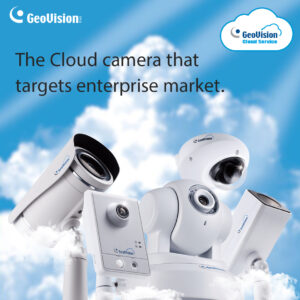
Software as a service (SaaS) and cloud computing have swept the IT world, thanks in large part to promises of cost savings, ease of management and use-it-as-you-need-it operations. So it’s no surprise that SaaS has come to video surveillance.
VSaaS systems—also known as hosted or managed video surveillance—are now offered by newcomers and traditional camera and video management software (VMS) companies, and by others in the surveillance space, such as access control firms and video analytics companies.
With VSaaS, cameras are installed at the user’s site and video is streamed to systems at the provider’s facilities. There is no need to implement specialized VMS for viewing the video; this is done over the Web. Users are charged a monthly per-camera fee—usually around $20.
- Hosted video: Offsite recording—video generated onsite is transferred on the customer’s WAN to the provider’s data centers, where it is managed and stored.
- Managed video: Onsite recording— video is stored at the customer’s site and is remotely managed by the provider.
- Combination of hosted and managed: Video is streamed to the provider’s site but also stored on the customer’s premises in one of many ways, such as on the cameras, on an appliance or on a network-attached storage (NAS) device. A growing number of hosting providers adding onsite recording, and this will become the most common approach.

Key Benefits of Managed Surveillance
Secure Web access to surveillance video: In traditional video surveillance, users view video by connecting directly to onsite recorders, which requires cumbersome networking changes and additional software on the viewing PC. With VSaaS, video is viewed from a public secure website hosted by the provider. Not only does this eliminate the need for dedicated viewing software, but it also enables users to view video anywhere they have Internet access.
Lower maintenance costs: Hosted and managed setups appeal to clients who no longer want to worry about updating their VMS and the digital video recorders (DVRs) or network video recorders (NVRs) on which it runs. In traditional setups, video is recorded on DVRs or NVRs that may be attached to a network, which makes them vulnerable to hackers. Clients don’t always keep up with security updates, and even if IT is involved with securing the box, the client often has to rely on the VMS vendor when the software itself needs updates or has problems.
Fewer DVR and NVR worries: There are three concerns with NVRs and DVRs: theft, damage and breakdowns. When a business is burgled, the DVR or NVR is often stolen. And if there’s a fire, the recording device is often too damaged to be useful in determining whether it was set purposely and if so, who was the perpetrator. That’s not a problem in a managed or hosted environment, in which the cameras stream video to the provider’s site in real time.
When an NVR or DVR fails, customers often don’t realize it until an incident occurs and they check the stored video. That’s when they find the DVR has not been recording for some time. In a managed environment, on the other hand, the camera is reporting to the provider’s system, and you can also have redundancy through onsite storage.

Typical Users
Typical users of hosted or managed systems are restaurant and retail chains, apartment complexes and small businesses. The systems are also being considered or used by healthcare organizations, telecommunications firms, manufacturers, banks, pharmaceutical companies and, recently, the public sector.
They’re appealing when you need rapid deployment of systems that are not tied down by a DVR, and the customer wants to get out from having to refresh the technology so often. One pharmaceutical firm implemented a hosted or managed system in 100 locations where it didn’t want workers to be able to view video locally. Another client, a large global firm with a 6,000-camera VMS system, wanted to expand video surveillance to its smaller offices, which would need just five or so cameras. They didn’t want to spend $10,000 to put another NVR in there. We brought in the cameras, which stream back to the hosted server, and a local copy is stored on a NAS.
There is a lot of interest from the construction industry because job sites may only need a temporary system or may have an Internet connection but not a computing infrastructure. Rapid deployment is perfect for them, plus the video being stored offsite is great because no one can steal the DVR.
These systems also suit to retailers, convenience stores and businesses, such as investment firms, that have a number of small locations that need two to five cameras each. They can view all of them on one screen. It brings central management to multiple locations.
Another company wanted video surveillance without the maintenance. Its needs are basic—cameras monitor who enters and leaves the sites, not individual employee activity. You can be traveling anywhere in the world—as long as there’s a Web connection, you can see them leave or enter the building and what they were carrying. In one instance, the company was able to identify who was stealing from other workers’ wallets because it knew who had left that site at a specified time. The company used a credit card at a particular time, and only two employees had exited the site in that time frame, only one of whom was in the area of the theft. It was enough evidence to send him away for a while.
Adapted from Csoonline



































































